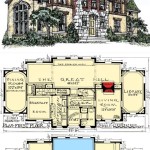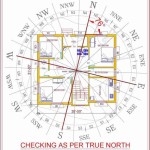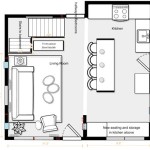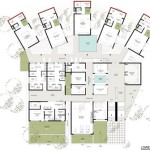Essential Aspects of Drawing a House Plan
Creating a house plan is a crucial step in the construction process, as it serves as a roadmap for the project. Whether you're building a new home or renovating an existing one, understanding the essential aspects of drawing a house plan is essential to ensure a successful outcome.
### Understanding Building Codes and RegulationsBefore you start drawing, it's imperative to familiarize yourself with the building codes and regulations applicable to your area. These regulations establish minimum standards for building safety, accessibility, and energy efficiency. By adhering to these codes, you can ensure that your house plan meets the required safety and quality standards.
### Floor Plan DesignThe floor plan is the foundation of your house plan, outlining the layout of the house and the placement of rooms. When designing the floor plan, consider the flow of movement, natural lighting, and the functionality of each space. Strive to create a cohesive and efficient layout that meets your needs and lifestyle.
### Site Plan PreparationIn addition to the floor plan, a site plan is often required to show the location of the house on the property. The site plan includes details such as the property boundaries, setbacks, easements, and any existing structures or natural features. Accurate site planning ensures that the house is properly situated on the land and complies with zoning regulations.
### Elevation DrawingsElevation drawings provide a detailed view of the exterior walls of the house from different angles. They show the height, shape, and architectural features of the house, including windows, doors, and rooflines. By creating elevation drawings, you can visualize the overall appearance of your home before construction begins.
### Section DrawingsSection drawings are vertical cross-sections of the house that illustrate the interior structure, including the foundation, walls, floors, and roof. They provide a deeper understanding of the space and the relationship between different levels and rooms. Section drawings are crucial for determining the structural integrity and functionality of the house.
### Detail DrawingsDetail drawings provide specific information about particular aspects of the house, such as stairways, cabinetry, or window trim. They show the exact dimensions, materials, and finishes for each detail, ensuring that the construction process is precise and efficient. Detail drawings help avoid costly mistakes or delays during construction.
### Scale and DimensioningIt's essential to draw your house plan to scale, using accurate measurements for all dimensions. This allows contractors to accurately estimate materials and costs, and it ensures that the house is built according to your specifications. Proper dimensioning ensures that the final product matches your expectations and budget.
### ConclusionDrawing a house plan is a complex and challenging task, but by understanding the essential aspects involved, you can create a comprehensive and accurate plan that forms the foundation of your dream home. By adhering to building codes, carefully designing the floor plan, preparing a site plan, creating elevation and section drawings, and providing detailed specifications, you can ensure that your house plan is a clear and comprehensive blueprint for your construction project.

Floor Plan Creator And Designer Free Easy App

Floor Plan House Sketch Stock Vector Ilration Of Building 52483697 Plans

House Plans How To Design Your Home Plan

Easy Home Building Floor Plan Cad Pro

House Plans How To Design Your Home Plan

Example Of House Plan Drawing Scientific Diagram

House Plan Drawing Everything You Need To Know

Where You Can Buy House Plans Live Home 3d

Floor Plan Wikipedia

Home Floor Plans House Plan Drawings








